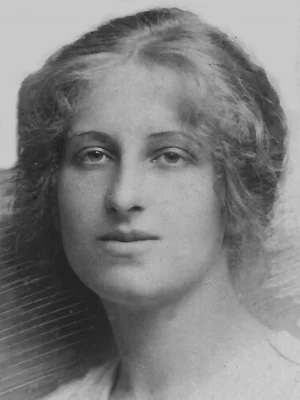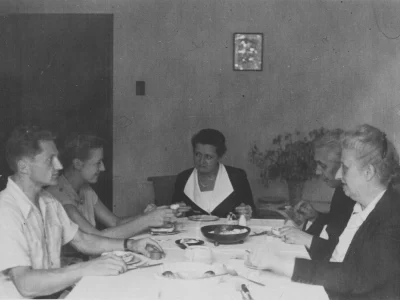Krystyna Pawłowicz was born in Warsaw on December 15th 1896 and died in Rio de Janeiro, Brazil on October 15th 1971 at the age of 74.
Family Background
She was the elder daughter of Kazimierz Pawłowicz and Helena Bożeniec-Jełowicka, and Bohdan Pawłowicz’s sister. Leszek, her nephew, was her godson.
She married three times. First to Piotr Olewiński but as the marriage was not consummated, it was dissolved and Krystyna returned home. Then, she got married to Mirosław Szabuniewicz but this marriage did not last long. Finally, she met Aleksander Hauke-Nowak, whom she married on June 2nd 1933, and with whom she remained until he died in 1956 in Rio de Janeiro. As he was already married in the Roman Catholic Church, which did not recognize divorce, they made their relationship official at the Evangelical-Reformed Church in Warsaw.
In Volhynia
Her husband was the governor of the provinces of Łodz (1933-1938) and later of the Wołyń Voivodeship (1938-1939).
World War II
After the outbreak of World War II, Krystyna and her husband fled Łuck. Aleksander traveled with the Polish Government in Exile first to Romania and then to Paris, France while Krystyna escaped through the Baltic countries. Later, they found themselves in exile in Great Britain when her husband joined the Polish Army in Scotland and in London.
Rio de Janeiro
In 1949 they were invited by Krystyna’s brother, Bohdan, to come to Rio de Janeiro, Brazil, where they lived with his family as from December 30th 1949 at Rua Xavier da Silveira, Copacabana.
Mr Aleksander Hauke-Nowak (Olek) was already Bohdan’s good friend, with whom he was in close contact at war time in France and the UK.
In Rio de Janeiro, Krystyna founded the Polish Youth Circle Świetliki (Fireflies) in 1953. Tomasz Łychowski, poet, painter and promoter of Polish culture in Brazil, was its first president and remembers tenderly the influence she had on him when they first met in 1952. He describes Krystyna in his autobiographical book “Moja droga na księżyc” (My way to the Moon: How I survived WWII), which he also translated into English and Portuguese. The 21st chapter is on the Świetliki (Fireflies) and it can be read in English, online on Google Books (page 67 to 71).
Late Years and Death
After her husband’s death in 1956, Krystyna was on her own as her own family and many friends moved elsewhere: her brother, his wife and godson to the US and her niece, Hanna, with her family to Santos. Her health and mind gradually declined and loyal friends moved her first to a small rest house and then, with the help of Father Zygmunt Szwajkiewicz, to the Casa de Velhice São Luis, a larger rest house for the elderly, where she stayed until she died in 1971 – death certificate(pdf).


